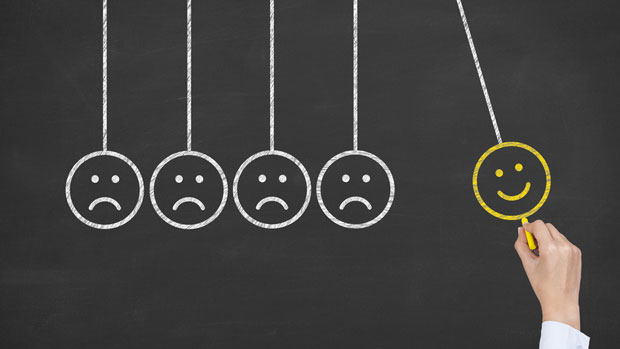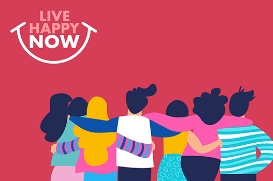How the Happiness Revolution Evolved
This timeline shows the progression of the unlikely and amazing story of positive psychology. You can read the full story in our article The Happiness Revolution.
| 1984 | Ed Diener coins the term subjective well-being. |
| 1985 | Ed Diener publishes his Satisfaction with Life scale. |
| 1997 | Martin Seligman and Mihaly Csikszentmihalyi meet on a Hawaiian beach and begin mapping out a plan for launching positive psychology. |
| 1998 |
Martin Seligman delivers his "Manhattan Project for the Social Sciences" inaugural presidential address at the American Psychological Association convention. Barbara Fredrickson's "broaden and build" theory of the value of positive emotions is published. |
| 1999 |
The first positive psychology conference is held in Akumal, Mexico. The first annual Positive Psychology Summit is held in Lincoln, Neb. The first university programs in positive psychology are available at Harvard and the University of Pennsylvania. |
| 2000 |
Special millennial issue of American Psychologist devoted to positive psychology. |
| 2001 |
"Positive emotions in early life and longevity: Findings from the nun study" published, linking happiness and positive outlook to longevity. U.S. News & World Report publishes "Happiness Explained" cover story. |
| 2002 |
First International Positive Psychology Summit in Washington, D.C. U.S. Department of Education grants $2.8 million for Martin Seligman to explore positive psychology in a Philadelphia high school. Martin Seligman publishes Authentic Happiness. |
| 2003 |
Marcial Losada and Barbara Fredrickson publish their 3:1 positivity ratio, showing that those who flourish exhibit a ratio of at least 3:1 positivity-to-negativity in their behavior and expression. Robert Emmons and Michael McCullough publish "Counting Blessings Versus Burdens" showing that a consistent practice of gratitude increases wellbeing. |
| 2004 |
$1 million National Institute of Mental Health grant to Sonja Lyubormirsky and Kennon Sheldon to explore practical "intervention" pathways to permanent increases in happiness. Martin Seligman and Chris Peterson publish Character Strengths and Virtues, the definitive text and positive psychology's what-goes-right answer to psychology's classic what-goes-wrong reference text Diagnostic and Statistical Manual of Mental Disorders (DSM). |
| 2005 |
Time publishes its cover story, "The Science of Happiness." First master's program in positive psychology at U Penn. "Pursuing happiness: The architecture of sustainable change" study shows as much as 40 percent of personal happiness is dictated by personal effort. "Does happiness lead to success?" study shows broad range of benefits, from physiological health to financial and career success and greater social engagement. |
| 2006 |
Gallup World Poll launched, with sampling that represents 95 percent of the world's population. Tal Ben-Shahar's "Positive Psychology" becomes Harvard's most popular course. |
| 2007 |
Sonja Lyubormirsky publishes The How of Happiness. First doctoral program in positive psychology at Claremont Graduate University. |
| 2008 |
Gallup-Healthways Well-Being Index launched in the United States. The Pentagom approaches Martin Seligman to develop a positive psychology program for the U.S. Army. |
| 2009 |
First World Congress on Positive Psychology held in Philadelphia. Barbara Fredrickson publishes her 3:1 positivity ratio finding in Positivity. |
| 2010 |
Tony Hsieh's Delivering Happiness hits No. 1 on New York Times bestseller list and stays on the list for 27 consecutive weeks. Gretchen Rubin's The Happiness Project hits No. 1 on New York Times bestseller list and has stayed on the list continuously for more than two years. |
| 2011 |
British government begins national happiness survey. Somerville, Mass., becomes the first U.S. city to track its population's happiness. |
| 2012 | Harvard Business Review publishes issue on "The Value of Happiness." |















